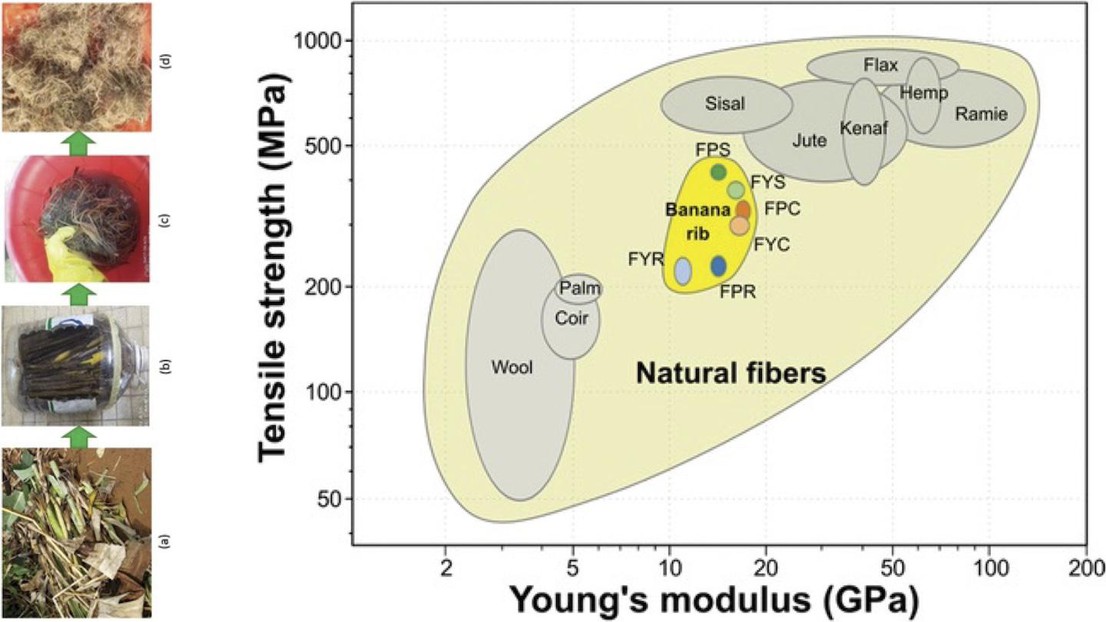New article in the Journal of Natural Fibers

© 2025 EPFL
Influence of Growth Location and Extraction Method on the Properties of Cameroonian Musa acuminata Leaf Vein Fibers
Banana plants form an abundant source of agricultural waste, which can be exploited to extract fibers. Whereas the trunk and pseudo-stem are currently exploited, leaf ribs, which are several meters long, could form a valuable source of fibers for use in structural composite materials, if their properties, reproducibility across locations, and extraction methods are well adapted. Thus, leaf ribs of the Grande Naine cultivar of Musa acuminata were collected in Cameroon in High Penja plantation in the Littoral Region, and a rural plantation in the Centre Region. Fibers were extracted using water retting, water boiling and caustic soda to assess the role of extraction on properties. The fibers had a density, appearance, chemical composition, and thermal degradation close to those of other banana fibers, an average length over 2 m, and 125–150 µm range diameters. Water boiling and soda treatment led to increased tensile properties, in the 15 GPa range for Young’s modulus and 350–400 MPa failure strength. A Weibull statistical analysis of the fiber failure revealed a slight influence of the growth location, and a major influence of the fiber extraction method, with the water boiling method showing a good balance between properties and ease of extraction.
Collaboration with the University of Yaoundé funded by the programme 100 PhD for Africa, under the UM6P-EPFL Excellence in Africa initiative